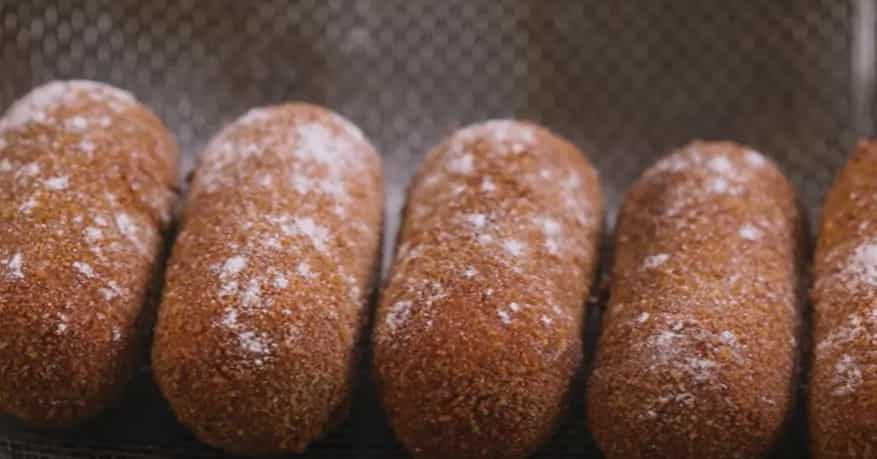You need a mandatory evening tea sometime between lunch and dinner. And because we are a culinary nation, tea time is turned into a decadent affair with the many evening munchies. But you can’t enjoy everything with a cup of tea. Obviously, you wouldn’t combine biryani and tea. What therefore qualifies a snack as the ideal chai time companion? Well, to begin with, it must be crispy, spicy, delicious, and most importantly, simple. And if that’s what you’re looking for, be assured that you’ve come to the correct spot. Hence cutlets are the ideal Indian chai time snack.
These veggie chops are a favourite Bengali street snack. These are addictive, so it’s impossible to consume just one. These fried crisp chops resemble croquettes or cutlets and have a slightly sweet flavour from the beetroot, carrot, and peanuts that are included. Very distinct in flavour from typical vegetarian cutlets or kebabs. The peanuts give the otherwise smooth and delicate chops that are crunchy on the outside a pleasant crunch and texture.
Both in Bengal and Bihar, vegetable chop is a popular street snack. Beetroot is one of the primary ingredients in these essentially vegetarian cutlets. Ideas of cuisine exclusivity can be destroyed with a little research into food cultures and history. An illustration of this is the puzzling situation of the vegetable chop. As you bite into one of Bengal’s favourite fried delicacies, such as a mutton chop, mochar, potato, or vegetable chop, during Durga Puja. It may be helpful to keep in mind that the Anglo-Indian ‘chop’ was formerly a popular dish in many different places and eras.
Cutlets were considered aristocratic food after Independence until the 1950s. They were served in posh restaurants in Lutyens Delhi such as the United Coffee House, which was founded in the 1940s by Punjabi immigrant families to serve the British before expanding to serve Indians after Partition.

Here’s the recipe for Vegetable Chop.
Equipment:
• Kadai
• Perforated spoon
• Flat dishes for breading (one each for the flour, breadcrumbs and eggs)
Ingredients:
For the filling:
• 400 gms beetroot
• 200 gms carrot
• 400 gms potatoes
• 30 gms vegetable oil
• 30 gms peanuts
• 20 gms coconut
• ½ tsp panch phoron
• 6 gms green chilli
• 30 gms ginger paste
• 8 gms coriander leaves (optional)
• 10 gms ghee
• 20 gms salt
• 35 gms sugar
For the spice mix:
• 4 gms amchur (dry mango powder)
• 2 gms cumin seeds
• 5 gms fennel seeds
• 20 pcs peppercorns
• 4 pcs dried red chillies
• 1 pc cinnamon
• 2 pcs cardamom
• 8 pcs cloves
• 4 pcs bay leaves
For breading:
• 30 gms flour
• 200 gms breadcrumbs
• 3 eggs
Method:
For the filling:
• To make potatoes tender, steam or boil them.
• Remove the peel, then mash the potatoes until lump-free.
• Cut carrots and beets into matchsticks that are 3 cm length.
• Chop the coriander leaves and green chilies finely. Slice slivers of coconut. The peanuts in half.
• Make a fine powder out of the spice mixture.
• Heat vegetable oil. Fry coconut on medium heat until golden. Set aside. Then, fry the peanuts until golden. Keep this aside.
• Use panch phoron to tame the oil. Keep an eye out for crackling.
• Add ginger paste and chopped green chilies.
• Fry for two minutes at medium heat.
• To help the beet soften, add the beetroot and half the salt.
• Cook until it starts to get a little limp.
• Add the remaining salt and the carrots. Continue to sauté the vegetables until they are soft, but watch out so they don’t become mushy or the chop will lose its firmness.
• Add the ground spices. Cover and cook for 2 minutes to allow spices to infuse.
• Add sugar (this chop is meant to be sweet, requiring a generous amount of sugar).
• Mash some potatoes in. Be careful not to break up the beet and carrot strands as you fully combine the ingredients.
• Cook the ingredients until it is fully dry.
• Add ghee, the fried coconut and peanuts, the chopped coriander leaves, and turn the flame off. Gently combine everything.
• Divide the ingredients into 50 gms parts once it has cooled. Roll each piece between your palms to form into cylindrical logs.
For breading:
• Take breadcrumbs, maida (plain flour), and beaten eggs and place them in three separate bowls for breading. Add some salt to each of them.
• In order to achieve a significant, crisp crust, you will have to double-bread the chops.
• To start, lightly sprinkle some flour on the chops. This procedure will stop the crust from subsequently separating from the filling.
• After that, shake off the excess after dipping it in the egg.
• After that, roll it in breadcrumbs, pressing them firmly onto the egg to ensure that they adhere.
• Re-dip the chop in the egg and then the breadcrumbs as you did in the preceding step.
• During this process, keep your dry and wet hands apart so that you can handle the flour and breadcrumbs with your right hand and the eggs with your left hand.
• If you are left-handed, flip this. This prevents the dry components from clumping.
• Fry until both sides are uniformly brown in heated oil over medium heat (180°C).
• Drain from the oil, then top with black salt.
• Serve hot with a salad of freshly sliced cucumber, onions, and beetroot.
Vegetable Chop is widely popular in roadside chop stalls or cabins in Kolkata. Vegetable cutlets, sometimes referred to as veg cutlets, are crisp, flavourful patties cooked with a combination of nourishing vegetables, flavourful spices, fresh herbs, and crispy breadcrumbs. In Indian cuisine, cutlets are a common snack.


